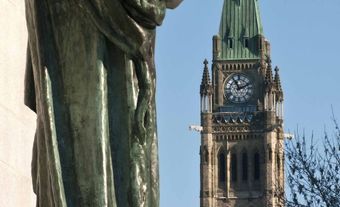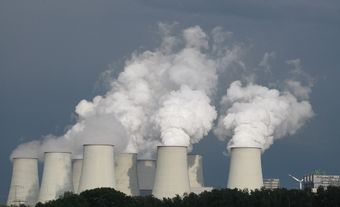Equalization Payments
Equalization payments are payments that the federal government makes to the poorer provinces. The monies come from Ottawa's general revenues and are unconditional transfers that can be spent as the recipient provinces please (see also TRANSFER PAYMENT). Their purpose is to reduce the horizontal imbalance among the provinces.
In general, 2 kinds of fiscal imbalance can arise in a federation - vertical and horizontal. The former is an imbalance between the 2 levels of government, federal and provincial, eg, when the responsibilities of the provinces are disproportionately large compared with their share of revenues. Such an imbalance can be remedied by a transfer of responsibilities to the federal government (eg, family allowances and EMPLOYMENT INSURANCE) or by a transfer of revenues from Ottawa to the provinces. By contrast, horizontal imbalance is a fiscal imbalance among the provinces themselves - the fact that some provinces have more sources of revenue and are therefore richer than other provinces. Equalization payments can help adjust these horizontal imbalances.
The Constitution Act of 1982 states "Parliament and the Government of Canada are committed to the principle of making equalization payments to ensure that provincial governments have sufficient revenues to provide reasonably comparable levels of public services and reasonably comparable levels of taxation." The concept of equalization can be traced to the statutory subsidies in the CONSTITUTION ACT, 1867, and more recently to the National Adjustment Grants recommended by the Royal Commission on DOMINION-PROVINCIAL RELATIONS as part of an overall reorganization of federal-provincial financial arrangements (see also INTERGOVERNMENTAL FINANCE; FEDERAL-PROVINCIAL RELATIONS).
The first formal equalization program was introduced in 1957. The transfers were designed to ensure that per-capita revenues of all provinces from shared taxes (see TAXATION) - personal income taxes, corporate income taxes and succession duties - matched those of the wealthiest provinces, at that time BC and Ontario.
In the first of the required 5-year revisions, the level up to which these transfers were equalized became the all-province average, rather than matching the wealthiest 2 provinces. As compensation, the recipient provinces were also guaranteed revenues equal to 50% of the all-province per-capita average of resource revenues. Throughout this time equalization payments rose, largely because the federal government transferred increasing proportions of the personal income tax to the provinces; from 10% in 1957 to 24% by 1967.
The comprehensive nature of the current equalization program dates from 1967. In effect, most of the categories of revenues collected by the provinces were equalized to the national average level. With one major exception (energy) and with some modifications, eg, increasing the number of revenue sources included, the system remained unchanged until 1982. Canada's equalization program became the most comprehensive and most generous in the world.
However, problems began to develop in 1973 with the increase in world energy prices. Maintaining full equalization of energy revenues and increasing domestic energy prices would have meant a tripling of total equalization flows and the inclusion of Ontario as a recipient province. Temporary steps were adopted in 1973-74 to reduce the impact of energy on the system and in the 1977 revision only 50% of resource revenues was eligible for equalization. In spite of this modification, Ontario still qualified for equalization payments over the 1977-82 period and was retroactively excluded from receiving payments by what has come to be known as the "personal income override," ie, essentially, no province whose per-capita income exceeds the national-average level is eligible for equalization.
In the 1982 version of the program, provinces are eligible to receive sufficient equalization to raise their revenues from all provincial and local revenue sources to a level that is calculated by applying national average tax rates to the average per capita tax bases of 5 designated provinces (Ontario, Québec, Saskatchewan, Manitoba and BC). As a result, Ontario will no longer qualify for payments and energy revenues will have less impact on equalization flows, chiefly because Alberta is not one of the 5 provinces.
The scheduled 1987 revision of the equalization formula has effectively been postponed for a year or two. Part of this relates to the proposed tax reform measures. Since taxation will shift from income toward consumption, this may require significant alterations in the formula. Moreover, the proposed federal day-care program contains shared-cost measures that cover 90% of costs for Newfoundland and only 50% of Ontario. This represents a major departure in that we are now embarked on expenditure-side equalization, which in turn may influence the negotiations on the revenue-equalization formula.
The 1985 Atlantic Accord on energy (with Newfoundland and Labrador) and the 1986 Canada-Nova Scotia Offshore Petroleum Resource Accord gives these 2 provinces a sort of special status with respect to equalization. Carried to the extreme, this would move equalization away from a formula-based system and toward a bilateral approach. Thus, the forthcoming negotiations might constitute a watershed in the evolution of equalization payments.

 Share on Facebook
Share on Facebook Share on X
Share on X Share by Email
Share by Email Share on Google Classroom
Share on Google Classroom


